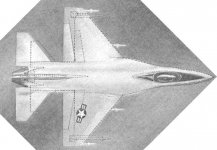The journalist mentioned something to the effect of, there is word going around that the Super Hornet is not very highly regarded by senior AF personnel, on grounds of it's 'Naval Heritage' influencing its development.
My question is, if this is true, is a valid concern?
The problem the Hornet 'family' of fighters face is that it was the last fighter to be designed without using John Boyd's energy maneuvering theory! As such, it is good at the low speed/low energy dogfight which leaves the Hornet at a disadvantage in high speed dogfights. The low speed dogfight is fine in a furball (16 Vs 16 or more fighters).
Sorry if this is inane. Thanks.
No need to apologize, it is an honest question.
Actually not really.
The YF-17, which it is based on, was originally a rival competitor of the YF-16 for a US Air Force contract. The YF-17 was rejected by the Air Force but drew the interest of the Navy and after a lot of development became the F-18.
So to answer your question, the F-18 started its life as an airplane designed for the Air Force.
Initially, the Navy was not interested in the YF-17 but, even after rejecting the YF-16 as being unsuitable for carrier operations. The Navy looked around and discovered they still needed a replacement for the A-7 in the light attack role and F-4 in the fighter role. The Navy still hated Northrop and wanted as little to do with his company as possible, so they used the excuse that Northrop had no carrier aircraft design experience, and they arranged McDD to team with Northrop to produce the naval variant of the F-18 and the agreement was that Northrop would build the F-18L landbased variant.
At that time, there were also two variants being planned, an attack variant and a fighter variant. Improvements in avionics and software enabled one airframe to fly both missions thus, the F/A-18 was born.
Yes the F-16 can fly both missions also but when you add all the requirements for carrier operations, the performance of the F-16N is degraded more than the F/A-18A.
Attached is a comparison of the F-16A versus the F-16N and the reason the Navy could not accept it. The Conversion Of The F-16A To The Navalized F-16N -AW&ST issues January 20, 1975 Page 28 and Jan. 27, 1975 Page 17
There are numerous differences between the land-based F-16 (Model #1601) and the aircraft carrier version (Model #1600).
1) The fuselage is stretched, both forward and aft.
2) The wingspan is wider and each wing has an increase in area of 57 square feet.
3) The flaps are larger.
4) The distance between the trailing edge of the wing to the stablator is greater.
5) The area of the stablator is greater and the width is greater.
6) The fuselage area ahead of the cockpit is broader.
7) The chord of the wing is longer.
8)
A) Model #1600 would be powered by the P&W-401 engine.
B) Model #1601 was to be powered by the P&W-F100 engine.
9) The stablators are larger in area and their span is greater.
10) The Navy version (#1600) of the F-16 would have been manufactured by Ling-Tempco Vought (LTV).

